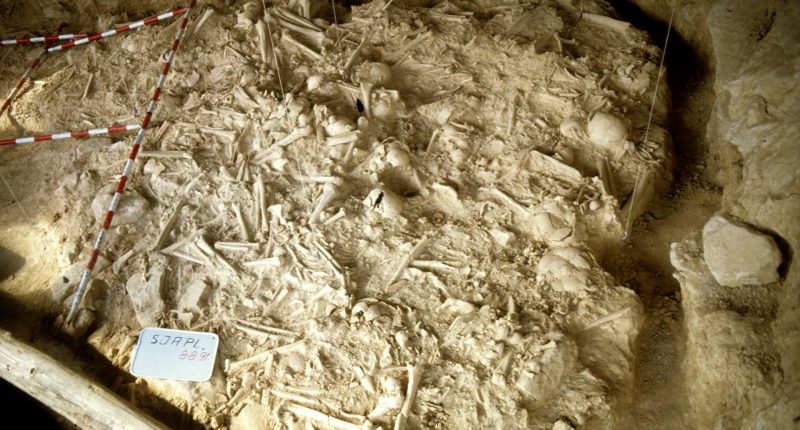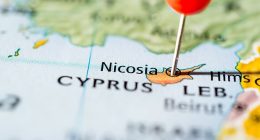A GRAVE full of tangled-up skeletons from 5,000 years ago has revealed a traumatic part of history.
A total of 338 skeletons belonging to men, women, and children were discovered in a mass grave in 1991 and scientists now believe the victims may have suffered from sophisticated warfare.
The skeletons were radiocarbon-dated to 3380 to 3000 B.C.
They were found at the San Juan ante Portam Latinam (SJAPL) rock shelter located in the town of Laguardia in northern Spain.
The bones of the ancient skeletons were found interwoven and in odd positions.
A study was published November 2 in the journal Scientific Reports by Teresa Fernández-Crespo, an archaeologist at the University of Valladolid in Spain.
It explained how archaeologists “teased apart” the tangled skeletons to learn more about what led to their deaths.
Researchers found evidence of traumatic injuries from arrows and skeletal indicators of poor health, along with high population pressure and the presence of different cultural groups.
They characterized these observations as signs of “a more sophisticated and formalized way of warfare than previously appreciated in the European Neolithic record,” per Live Science.
They believe that there might have been complex conflict between a community that lived together, rather than for destructive battle reasons.
Most read in News Tech
“We think we are seeing the result of a regional inter-group conflict,” Fernández-Crespo told Live Science in an email on Thursday.
“Resource competition and social complexity could have been a source of tension, potentially escalating into lethal violence” between communities, she said.
Ryan Harrod, a bioarchaeologist at the University of Alaska Anchorage who was not involved in the study, explained why the injuries show more signs of the violence being “sophisticated” rather than “epic.”
“The fact there were more nonlethal compared to lethal injuries on the 338 individuals might indicate that the regional clashes were not epic battles or warfare,” Harrod said.









